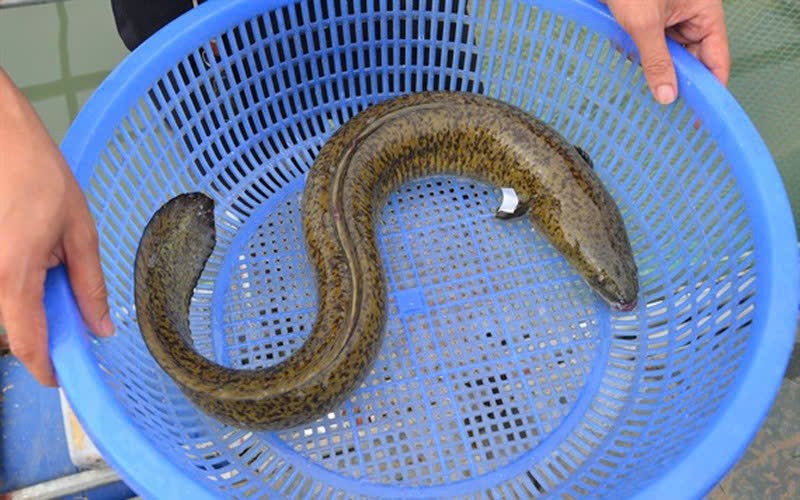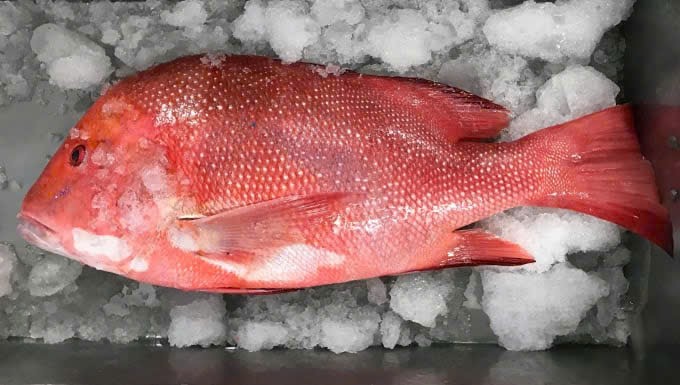According to the Poison Control Center - Bach Mai Hospital, at the end of July, a family of 14 people traveled to Ky Anh beach (Ha Tinh) and had dinner with seafood dishes such as eel, shrimp and oysters.
Several hours after the meal until the next morning, many people in the group began to experience symptoms of numbness in the tongue and mouth, muscle aches, and fatigue in the limbs and joints throughout the body. Some people also had digestive disorders, a burning sensation in the throat, and chest tightness.

That same evening, 4 people (aged 13-55) were quickly taken to the Poison Control Center, Bach Mai Hospital for emergency care. After 1 day of intensive treatment, the health of all 4 people was completely stable. Symptoms of tongue numbness and body aches were gone, leaving no localized neurological sequelae. All patients were discharged from the hospital and continued to monitor their health at home.
At noon on July 26, the Poison Control Center again received the family of Mr. VAT ( Hai Phong ) consisting of 4 people (Mr. T, his wife and two children aged 16 and 19) for emergency treatment. According to Mr. T, during lunch, his family ordered a pre-processed red snapper dish to eat at home. From 1.5 hours to about 4 hours after eating, all 4 people showed symptoms of abdominal pain, nausea, diarrhea, cramps and muscle pain throughout the body. Mr. T's wife and daughter also showed symptoms of sensory disturbances, dizziness, lightheadedness, unmeasurable blood pressure, weakness and inability to walk.
Upon arrival at the Poison Control Center, all four were found to have slow heart rates. Doctors explained that Ms. H’s serious condition was initially due to arrhythmia, a slow heart rate that led to reduced blood flow to the brain, causing a lack of oxygen to the brain. The Poison Control Center also diagnosed the patients with ciguatera poisoning. After treatment, the entire family improved well and were about to be discharged from the hospital.

According to Dr. Nguyen Trung Nguyen, Director of the Poison Control Center, ciguatera poisoning is a food safety hazard that people need to be aware of, especially in coastal areas. This is a poisoning condition caused by eating coral reef fish that have accumulated a very strong neurotoxin called ciguatoxin.
This toxin comes from a tiny microalgae called Gambierdiscus toxicus. This algae is eaten by many small fish, which are then eaten by larger fish, which are then eaten by reef fish such as barracuda, grouper, snapper, sturgeon, anchovy, amberjack, eel, grouper, parrotfish, sea bass, shark, blue-striped cleaner fish, etc.
"There are hundreds of fish species that contain ciguatera toxins, but less frequently, including jellyfish. Due to the process of "big fish swallowing small fish" as above, the toxins accumulate more and more in large fish, leading to people eating enough toxins to cause poisoning," said Dr. Nguyen.
Experts also warn that the most dangerous thing is that ciguatoxin is completely colorless, odorless, tasteless and cannot be destroyed by any processing method such as cooking, freezing or pickling. A fish carrying the toxin still looks completely normal.
Doctors also recommend that people should not eat a lot of the above fish to prevent poisoning, especially not to eat the fish's organs because that is where many toxins are concentrated.
However, if you choose to eat the above fish but they are farmed, there will be no natural toxins from toxic algae as above.
Source: https://cand.com.vn/y-te/sau-bua-an-hai-san-8-nguoi-trong-hai-gia-dinh-phai-cap-cuu-i776835/





































































































Comment (0)